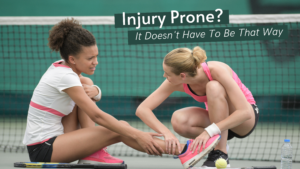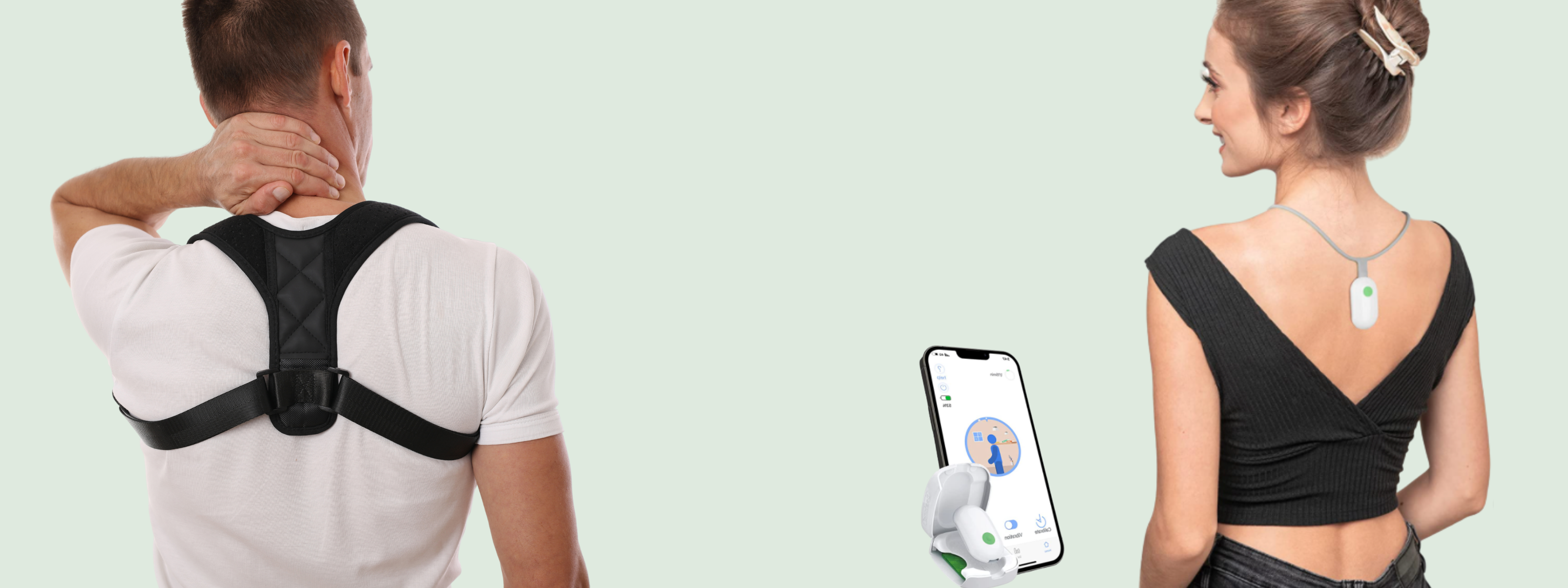No, the straps don’t work, period. But, there is a solution just ahead.
If you are an avid runner, you’ve either noticed your comrades wearing knee (patellar tendon) straps, or you wear one or two yourself. If so, you’ve bought into the lie that these particular braces are effective at reducing or removing knee pain. Or, maybe you just don’t know what else to do. Fortunately, we have a permanent solution.

First, why don’t these knee straps work? These knee straps are designed to put pressure on the patellar tendon and support the kneecap, supposedly to improve the way your kneecap tracks. Doctors often recommend using a knee band strap if you have Osgood Schlatters, Patellar Tendonitis (Jumper’s Knee), Chondromalacia Patella or Runners Knee.
An external strap simply cannot change the way your knee tracks.
WHY DOESN’ T IT WORK?
Putting pressure on a tendon doesn’t change the way your knee tracks. Your knee tracks the way it does because of the tug-of-war going on between the muscles around the knee. Here’s a simple example. If your inner and outer thigh muscles are out of balance, the knee will get pulled into a knock-knee position or outwards to a bow legged position. Once the knee is pulled out of alignment, the kneecap will have a crooked track.
How exactly is putting a pressure band on that crooked knee going to help? It can’t. No longer does your knee move in a stable hinging motion, and no longer will your kneecap have a straight groove to track in. The knee strap can’t fix the muscles, so it can’t fix the problem.
So, if not knee straps, then what can you do? Let’s think back to the tension problem that caused the knock knee position in the example above. In order to get the knee tracking properly again, you’ll need to straighten out the ankle, knee, and hip joints. Wait, now we have to consider the joints above and below the knee? Well yes, since the muscles surrounding the knee are attached up to the bones of the hips, or down to the bones of the ankle. Pain in a joint means there is something out of place elsewhere which is generating the pressure or misalignment. Focusing on one joint at a time is never going to work because the joint pain is just a symptom.
WHOLE BODY FIX
Once you understand the whole body connection, you’ll know that a whole body fix is the only real solution for knee pain, or any muscle and joint pain. Your knee might be the joint that hurts, but it’s likely a problem with your hips and ankles. Can you bend over and touch your toes? Can you move your ankle freely in all directions? Over time, with misuse, or lack-of-use, a lot of these movements are lost. These are all things that can cause a joint to get out of position.
Returning the muscles around the knee to their proper tension and strength will get your knee to track properly. You’ll need to wake up the weak muscles to allow the overworked muscles to relax. When you gently retrain your muscles to do their proper jobs, from head to toe, your joints will return to their proper place, and your pain will be permanently gone. The fastest way to get there is with PTX. We’ve studied posture and the way the body moves for decades. We know exactly which exercises and in exactly which order will make your joints straight again.
If you want your pain to leave and your running to improve, we’ve got you covered. PTX Therapy has put together an easy to follow digital program. You’ll know exactly what to do to return your body to it’s best pain-free alignment.
SUMMARY
Now it’s up to you. You can try all the knee straps and other external gimmicks available, or you can fix your muscles to fix your joints. If the strap isn’t addressing the real problem, then you think of it as bling to impress your friends. Of course, a better time without the pain is much more impressive to everyone.
Check it out today: www.ptxtherapy.com












